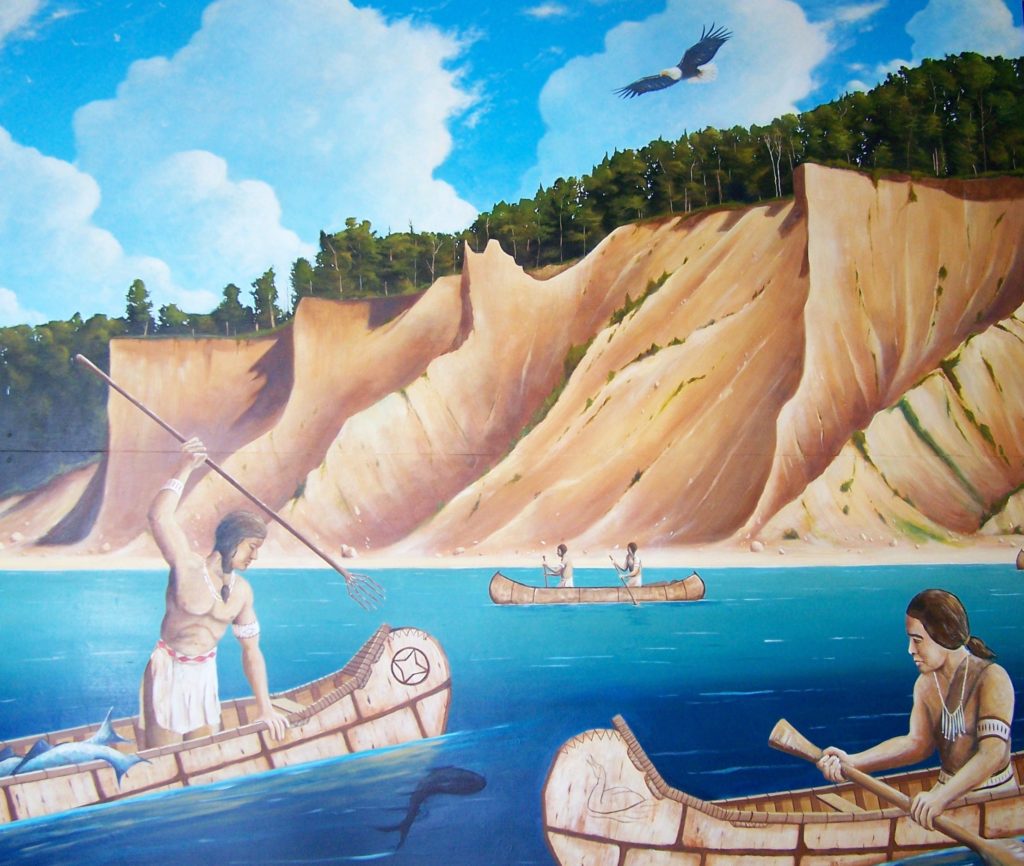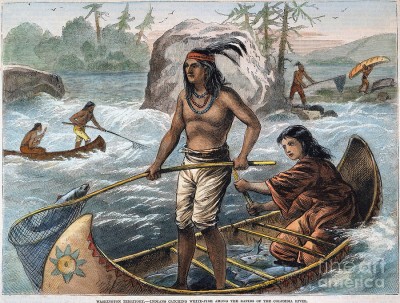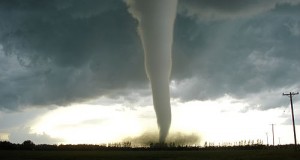If you love to fish, you might have wondered how the indigenous people of the Americas managed to fish without all that expensive equipment so many people seem to use today.
When you think about it, many native tribes relied on fish as one of their main food sources, but without metal hooks, reels, rods or sonar devices, how did they manage to catch enough fish to not only survive, but to thrive?
My father was an avid fisherman, and although he liked his expensive reels, when he took my brothers and me camping, we rarely used any type of equipment other than the occasional net, which we actually brought for frogs. (I will tell you about my father’s favorite fishing method, the one he learned from his grandfather, later on.)
Let’s take a look at some of the forgotten or little-known ways that native people caught fish and other aquatic foods.
Spears and Other Obvious Methods
Most people think of spears as a means of catching fish — like Tom Hanks in the movie Castaway. While native people certainly did use this method, it isn’t always as easy as old Tom Hanks made it look like in the middle of the movie. If one was lucky, rocks provided a good platform from which to stand and wait for a fish, or a school of fish to pass. Canoes also were used, with one person navigating the canoe and holding it steady when they needed to, while two or more other persons would spear fish.
In a pinch, even the old bow and arrow could be used in shallow water. If the water was too deep, you could easily lose the fish, and your arrow, in the depths. A few tribes, such as the Powhatan, did make a type of line, called a “pemmenaw,” which was attached to arrows so they could be retrieved, along with the fish.
Get The Essential Secrets Of The Most Savvy Survivalists In The World!
During the winter, a common method to catch fish was the lure and spear method. A hole was cut in the ice, and then a white piece of bone was lowered into the hole on a piece of sinew. Fish would follow this “shiny” bone to the surface, then speared.
Nets or Obstruction Techniques
These methods remind me of my father’s favorite fishing method. He often referred to it as “the lazy way to eat.” Native people were known for making obstructions that worked like a net that they placed across the opening of streams or channels. These were made from woven reeds or other types of tough grasses, tied to stakes. These stakes were then placed on either side of a channel or part of a fast running stream, very much like a fence. Fish were held fast to this “fence” by the swift moving current.
Native people used similar types of traps as well. One method involved putting reeds or small twigs in the water, making a giant V. Rather than trying to swim back the way they came, the fish would congregate at the small part of the V, trying to find an exit. Fish could simply be pulled out by hand.
Another common trap, called a weir, was made from reeds. It formed a type of funnel that fish would swim in to, but found they could not escape due to either a fast current or multitude of fish behind them. These weirs were quite large, sometimes being three feet wide at the opening and about 10 feet in length!
Still other tribes used nets made from plant fibers. These large nets were then suspended between people standing in two canoes stationed on either side of a river. Once a few fish were caught, they were placed in the boat, then the net replaced in the water. Since the nets were not strong like nylon nets, they could only hold a few pounds of fish before they needed to be pulled in. Over the course of a day, however, this resulted in a bounty of fish. This also ensured that plenty of fish were left to replenish the waters.
Another type of net involved using a tree branch that made a large Y. Reeds or plant fibers were then tied and woven between the Y, making something like a very loosely woven basket. A person could stand in the river or ocean, or on a rock or in a canoe and scoop up fish, or wait patiently until the fish swam over the net, and then quickly pull up the net.
New Solar Oven Is So Fast It’s Been Dubbed “Mother Nature’s Microwave”
My father would employ us kids to get sticks for firewood. He would then select a few dozen sticks about 2 inches in diameter. He used these sticks to make a large U in the water, usually in front of a swift moving part of the stream. The fish we caught, usually rainbow trout, would become trapped in the U, unable to swim out due to the strong current. This worked remarkably well and we often had fish for dinner each night, as well as fish to take home to our mother.
Seasons and Tides
Native people understood the cycles of nature. Pacific Northwest tribes knew when the salmon were returning to spawn, and would wait for them to finish spawning, before taking their dead or dying bodies as meat. In the fall, tribes could collect, literally, thousands of salmon. Drying the meat would ensure that they would always have something to eat, no matter what happened that winter.
Atlantic salmon will return again and again to spawn, so native people would make traps or use nets to catch them on their return route, after they had spawned and lay eggs. Indigenous tribes knew that if they took salmon before they spawned, there would soon be no more salmon to catch.
Those who lived near the seas quickly learned to catch fish, crabs and other sea life in tide pools. Tide pools make natural traps for fish, leaving them in very shallow pools after the tide goes out. Some tribes would take nothing more than baskets to the tide pools and pull out fish and crabs by hand.
Native people learned to find other food sources by watching nature at work. They knew when they could collect turtle eggs, birds’ eggs, clams, frogs, crayfish, sea otters, seals and basketfuls of migrating anchovies.
What alternative fish-catching methods have you used? Share your tips in the section below:
Learn How To ‘Live Off The Land’ With Just Your Gun. Read More Here.
 Off The Grid News Better Ideas For Off The Grid Living
Off The Grid News Better Ideas For Off The Grid Living





